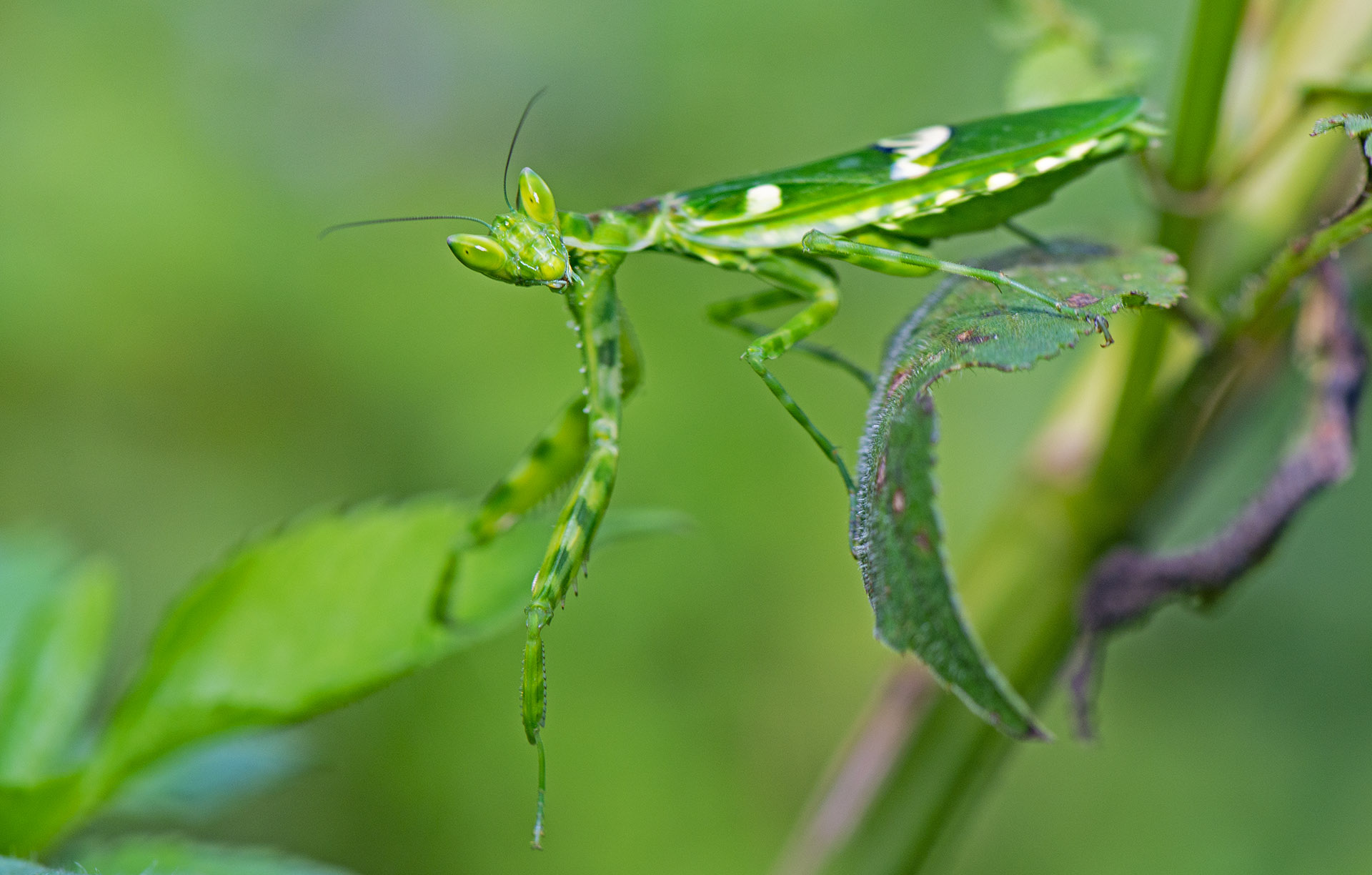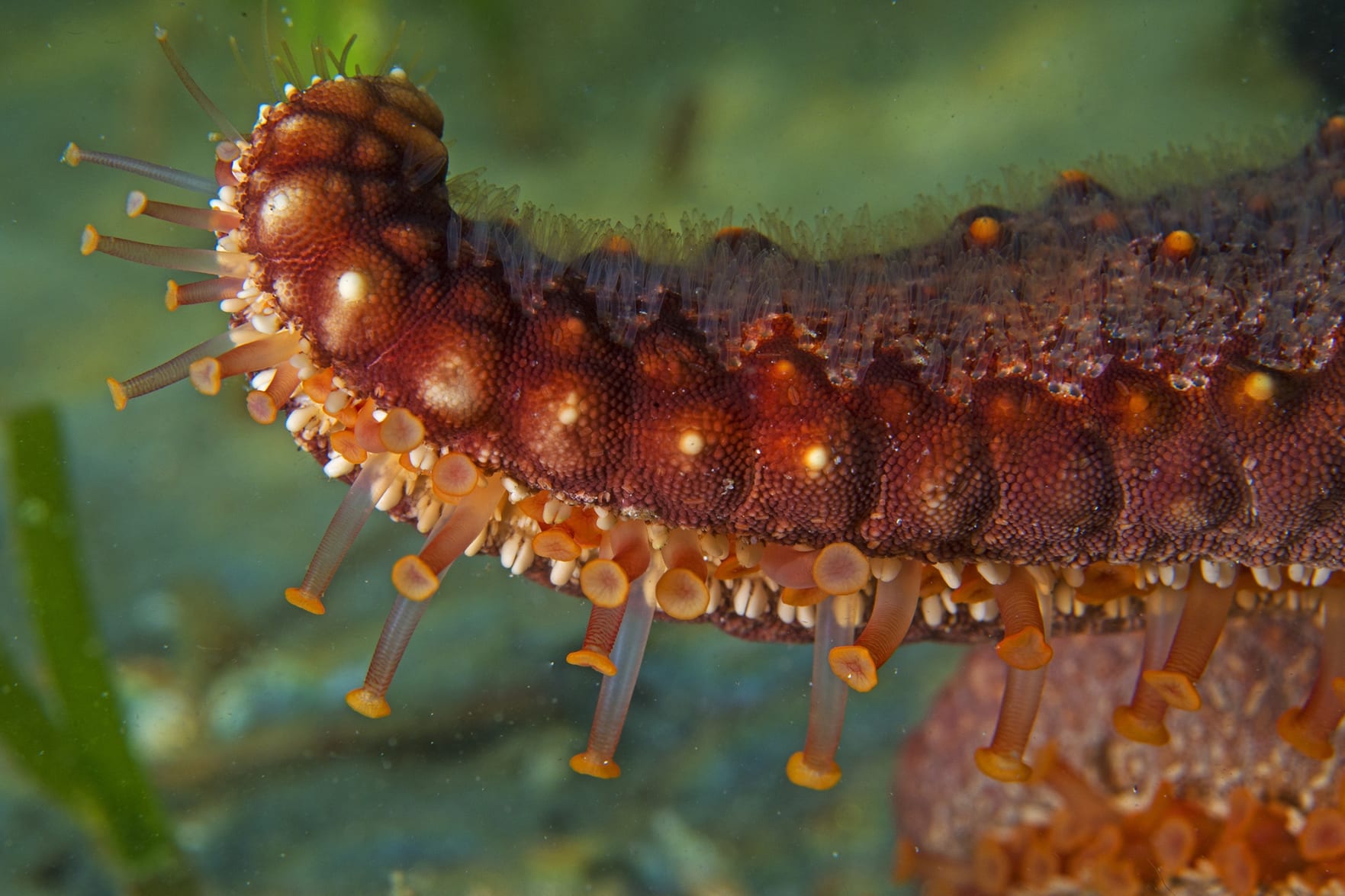 Listen to this article
•
15:34 min
Listen to this article
•
15:34 min
An insect the size of your little finger may have twice as many eyes as you do. Creatures that dwell in the deep dark ocean may lack a brain and bones, but have a dozen pairs of eyes. While most living creatures have two eyes, there is a host of fascinating insect, arachnid and marine life that bends the rules of biology. These wild wonders come with in-built light and motion sensors and 360-degree vision. While we all see the world differently, there are some creatures out there with truly incredible peepers, to help them navigate the wild.

Cover photo: Dhritiman Mukherjee
Praying Mantis
Two big, bulbous eyes sit at the corners of a mantis’s triangular face. If you get up close and personal with the dexterous little insect, you’ll see three tinier eyes right in the centre of its head. A praying mantis has a grand total of five eyes — three little ones to detect light, and two large ones to see motion.
This cool biological feature is just one in the long list of fascinating mantis characteristics: they can also turn their head 180-degrees; they are master hunters with lightning-quick reflexes and spikes on their legs to immobilize their prey; and are superbly camouflaged among plants. A formidable foe in the insect world.

Box Jellyfish
While this notorious creature of the seas may lack a brain, bones, and a heart, it more than makes up for it with its 360-degree vision. A box jellyfish has long tentacles emanating from a transparent, cube-shaped bell. Upon each of the bell’s four flat surfaces is set a cluster of six eyes, giving the creature an incredible 24 eyes with which it processes images, detects light and motion. The incredibly venomous jellyfish also called sea wasps or marine stingers can send its victims — such as small fish and shrimp — into severe shock with its toxins.
Starfish
Have you ever wondered where a starfish’s eyes are located? Do they even have eyes? If so, how many? There’s no single answer, because a starfish (also called a sea star) has as many eyes as it has arms. The beautiful marine creature has one eye on the tip of each of its arms. While we may easily be able to see stars on the beach, the sea stars can’t necessarily see us clearly. Even with their multiple eyes and panoramic vision, sea stars can’t process colour, and see blurry images at best. Their eyes can sense light and dark, helping them to track prey and be aware of predators. We imagine starfish as five-armed creatures, but many varieties have more than five arms, and can even regenerate arms (and eyes) lost to predators or injury.

Spiders
From the tiny ones that sometimes scuttle around our kitchens, to the palm-sized giants found in forests, spiders come in all shapes, sizes, and colours. While most spiders have eight eyes, there are those that have six, two, or no eyes at all. Just like in humans, spider eyes occur in pairs, so there will always be an even number. The tarantula for instance has eight beady little eyes, arranged in two neat rows. In spite of having so many eyes, most spiders have poor vision, sensing only light and motion.







